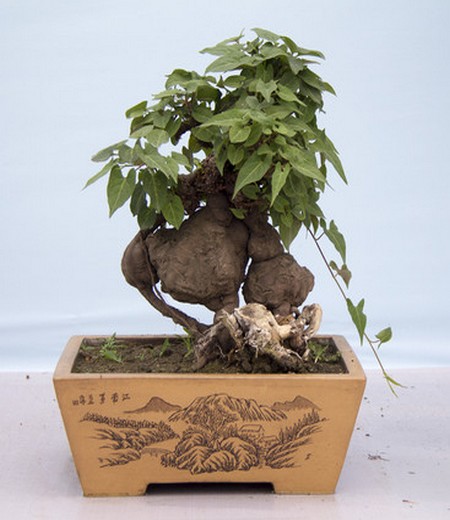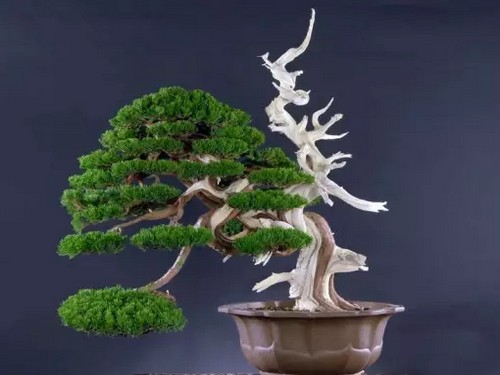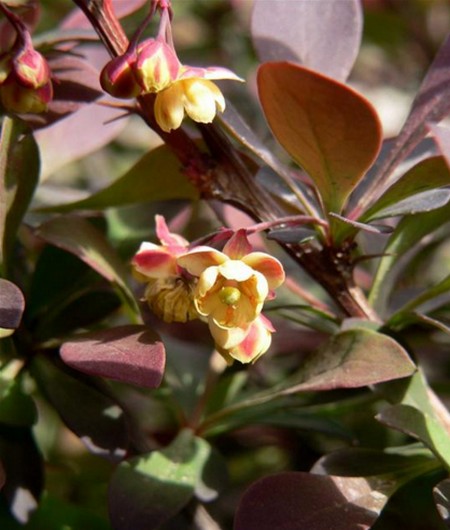Production method of Polygonum multiflorum bonsai
Polygonum multiflorum can be planted in four seasons and can live in four seasons. Shade resistance, water resistance, dry resistance, sun resistance, several books are resistant to everything. I have planted cactus before, but I have not yet planted Polygonum multiflorum. Now I share the method of making bonsai of Polygonum multiflorum for reference.

1. Choose soil and mix it with soft and breathable soil, preferably with river sand at 1:1. Although the growing environment of Shouwu is very bad, it is certainly best to grow and thrive on good soil, isn't it? )
2. Soak the whole Polygonum multiflorum in water, soak it wet and serve. According to the shape, design, the tuber will be buried at least 1 stroke 3 or more.
3. Put on the basin at once, pour enough water, pour water thoroughly, don't be afraid to pour more! It makes no difference.
4. If there are conditions, it is best to pack bags. Like my Touri, it can accelerate the sprouting and rooting. There are also a lot of vines. Don't be afraid of being airtight. In fact, it is the principle of plastic greenhouse. Moisturizing, heat preservation to promote growth.
5. Put it in a wet place without blowing or basking in the sun (preferably after bagging). That is, wait for the bud (I put it in the bathroom, you can refer to it).
Polygonum multiflorum likes warm and humid environment, is resistant to cold and barren, and is not strict with soil, but it grows better in sandy soil with loose air and good drainage. The requirements for light conditions are not strict, although the vines growing in the shade are luxuriant, but the leaves are large and thin, which is disadvantageous to the ornamental, so the growing period can be maintained in the place with sufficient sunshine and air circulation, so as to make the leaves small and thick. It has high ornamental value.
Watering should master the principle of "no dry, no watering, watering thoroughly" to avoid stagnant water in the basin soil and prevent root rot. Because it is resistant to barren, and as a bonsai, it does not need to grow too fast, so there is no need to apply additional fertilizer. Polygonum multiflorum has strong germination and rapid vine growth. During the growing period, it should be trimmed at any time and cut off the vines and leaves that affect the ornamental, so as to maintain its sparse, handsome and elegant shape. Polygonum multiflorum has a certain degree of cold resistance. In winter, Polygonum multiflorum can be maintained in a cold indoor or outdoor shelter from the wind and sun, properly watered to avoid dry freezing.
For the shaped bonsai of Polygonum multiflorum, the basin can be turned every 1 to 2 years in spring, cutting off the overlong branches and vines, retaining only its basic skeleton, and cutting off the rotten roots to promote the germination of new roots. the basin soil can be mixed with garden soil, sand, slag and so on.
Note:
It is recommended to bask in the sun after bagging, which has two advantages: one is that the sun will reduce the growth of bacteria and prevent it from damaging Polygonum multiflorum; the other is that it can sprout and root as early as possible in about 2 weeks (about 20 degrees).
Then wait for the sprouting, if the bag, wait for the bud to grow to 10 CM can take the bag, do not rush to take it outside. This can be kept completely indoors and is very shady. And it's best to pick up the bag on a rainy day and slowly bask in the sun.
I have kept this pot in my picture for several months, and I have never seen a glimmer of sunshine in the middle of the living room. But it is best to bask in the sun regularly. After all, the nature of Polygonum multiflorum is to like yang and endure yin. If you bask in the sun, the vine must be much better than my pot.
Time: 2019-05-26 Click:
- Prev

The method of making real cypress bonsai
Real cypress bonsai has always been famous in bonsai circles at home and abroad for its old stem, tight leaves and graceful posture, especially in Japanese bonsai exhibitions, which are made of century-old cypress, with white bones and red skin, such as swimming dragons, vigorous and simple, with Xianjia style, which can be called the top grade of bonsai. The true cypress of potted plants in Taiwan
- Next

The method of making bonsai of Berberis amurensis
Purple leaf Berberis is an important color leaf shrub in landscaping, which is often composed of color blocks, ribbons and pattern flower beds with golden leaf privet and big leaf boxwood. Purple leaf berberis balls can be planted by the roadside or embellished in the lawn. In addition, purple leaf Berberis is also a good material for making bonsai. Because it is more shady.
Related
- Fuxing push coffee new agricultural production and marketing class: lack of small-scale processing plants
- Jujube rice field leisure farm deep ploughing Yilan for five years to create a space for organic food and play
- Nongyu Farm-A trial of organic papaya for brave women with advanced technology
- Four points for attention in the prevention and control of diseases and insect pests of edible fungi
- How to add nutrient solution to Edible Fungi
- Is there any good way to control edible fungus mites?
- Open Inoculation Technology of Edible Fungi
- Is there any clever way to use fertilizer for edible fungus in winter?
- What agents are used to kill the pathogens of edible fungi in the mushroom shed?
- Rapid drying of Edible Fungi

